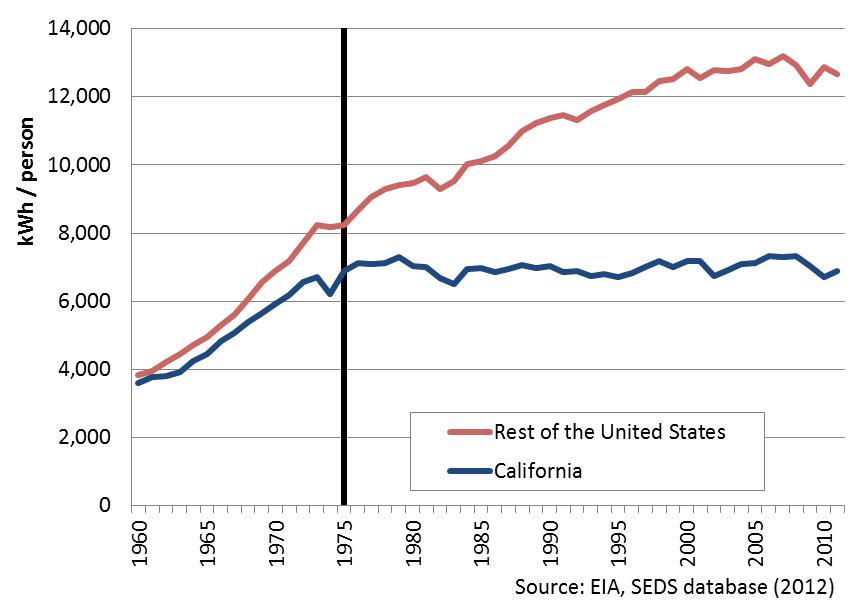How the 2019 Update to Title 24 Will Impact Commercial Electrical Work
TITLE 24 IS THE PART OF CALIFORNIA'S MANDATORY BUILDING CODE WHICH MANDATES THE EFFICIENCY OF LIGHTING, SWITCHES, AND OTHER ELECTRICAL ELEMENTS.
December 6, 2019
If you have lived in California for any length of time, it should come as no surprise that the state has some of the most stringent building codes in the country. But the state has not only endeavored to protect residents of the state from the threats of fires and earthquakes, but also to bolster the state’s infrastructure and make it more resilient to changing times. One of the many ways that the state government has done so is the implementation of the Building Energy Efficiency Standards.
Back in the 1970s, long before ‘green friendly’ was a widespread concept, the California legislature was concerned by the state’s skyrocketing energy consumption, and the ability of energy infrastructure to keep up with demand. To confront this, in 1978 the California Building Standards Commission created the “Energy Efficiency Standards for Residential and Nonresidential Buildings,” which was implemented as Part 6 of Title 24 of the California Code of Regulations. This set of regulations is often referred to as simply the “California Energy Code,” or more often, “Title 24.”
Title 24 is a set of building codes which dictate how energy efficient new homes and commercial buildings must be, and mandate the use of high efficiency insulation, lighting, water heaters, and more.
Title 24 has significantly reduced California’s electricity consumption.
Title 24 is not an optional certification, like the popular Leadership in Energy and Environmental Design (LEED) certification. Title 24 is part of the state’s building code—compliance isn’t an option.
And the reality is, Title 24 works.

As the Natural Resources Defense Council showed using data from the Energy Information Administration (EIA), energy consumption in California has flatlined for the last 40 years, while it has climbed in the rest of the nation. In 2017, the EIA ranked California 48th for energy consumption per capita.
Title 24 is updated every three years, and the newest update goes into effect in January 2020.
When Title 24 was implemented in 1978, its creators understood that with changes in construction and technology, it would quickly become obsolete and fail to fulfill a key goal—that structures built according to Title 24 standards would be cost effective over a period of 30 years.
This is why California law requires that the regulations be updated every 3 years. The last update went into effect on January 1st, 2017, and new revisions will go in place January 2020. The changes affect a range of mandatory, prescriptive, and performance measures, as well as building addition and alteration codes.
Updates to the energy standard include:
- Lighting Power Density (LPD) requirements are now fully based on the use of LED lighting.
- All restrooms are required to have occupancy sensor controls installed.
- Enclosed areas of 100 square feet or more, with lighting loads exceeding .5 watts per square foot, must have multi-level controls that allow lighting levels to be adjusted up and down.
- Daylighting controls must provide automatic daylighting functionality that meets specific setting, calibration, and accuracy requirements.
- Installation of solar photovoltaics (PV) will become mandatory on all new residential properties in the state moving forward.
- All HVAC systems will require MERV 13 filters. This will affect high-rise residential buildings and hotels, which were previously required to use MERV 8 filtration.
- Changes to lighting power density requirements will require a reduction of the window-to-wall ratio, or the purchase of more efficient HVAC systems to meet Title 24 compliance.
- Energy code now covers more occupancy types. I-1 and I-2 occupancy types have been added, which include hospitals, assisted living facilities, and nursing homes.
Over the years, commercial electrical work has gotten significantly more complex and involved. Commercial projects cannot use off-the-shelf lighting systems and standard light switches. Title 24 requires more control systems, more sensor-driven systems, and more specialized lighting sources. The increased requirements on I-1 and I-2 projects, while currently filled with exceptions, show that Title 24 is going to continue to expand to encompass more project types, and implement increasingly stringent requirements.
The demand for experienced commercial electricians is only going to increase, and any electrician invested in the future is advised to study past updates to Title 24 and proposed future updates in order to get a sense of what tomorrow’s standards will look like. Getting ahead of the pack by using future-proofed private standards may pay off handsomely.
Ready to learn a skilled trade and work on some of the most exciting commercial construction projects in California and beyond?
I-TAP is an electrical apprenticeship program that helps you find your passion, grow your skills, and place you in the perfect electrician job.
